Alfred Jacob Miller was born in America and had great talents as an artist. He is mostly renowned for the paintings he created of the trappers and the Native Americans. Most of them were involving the fur trade that could be found in the western United States.
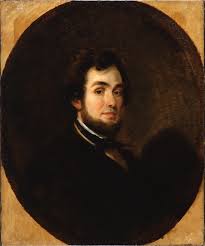
There were also numerous portraits and genre paintings. They were in and around Baltimore and the paintings depicted the mid-nineteenth century.
Alfred Jacob Miller Biography
Alfred Jacob Miller was born in Baltimore in Maryland and grew up to be one of the most renowned artists of his time. He grew up to be the eldest of the nine children of Harriet J Miller and George W.
His father was a merchant and he also kept taverns in central Baltimore. The family also had a farm in Hawkins Point.
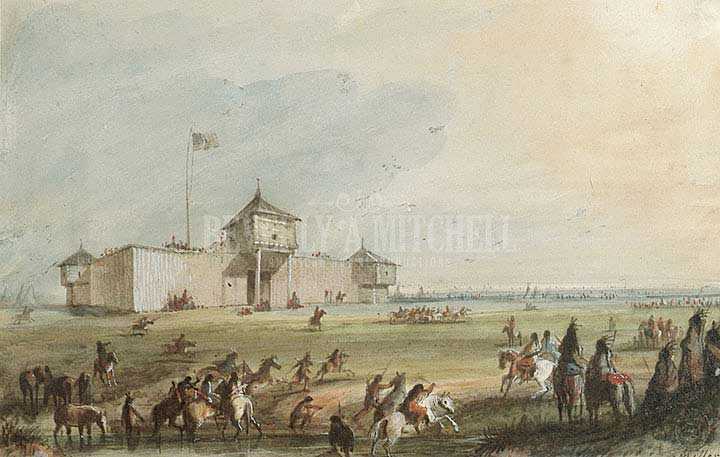
Miller also attended a private school in Baltimore at John D Craig’s Academy. However, no formal art instruction was received by the artist there. The first lessons in art were possibly received from Thomas Sully.
Early Life of Alfred Jacob Miller
Miller traveled to Paris in 1832 to study art. This was only possible due to the financial support of his family and the art patrons in Baltimore.
On reaching Paris, he got admitted as an auditor at the Ecole des Beaux-Arts to the life drawing classes of the time.
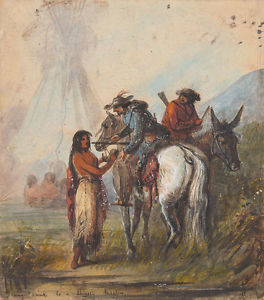
He started out by copying the paintings in the collections of the Louvre there. He traveled to Italy in 1833. He visited Venice, Bologna, and Florence but finally settled down in Rome.
He befriended the French painter Horace Vernet and the Danish sculptor Bertel Thorwaldsen. He started studying at the English Life School.
Alfred Jacob Miller’s Rise to Fame
Miller returned to Baltimore in 1834. He opened a downtown studio there and started advertising himself as a painter of portraits. He even offered copies of the arts from the Old Masters.
The decision to move to New Orleans might have been prompted by some professional or financial difficulty. This city was relatively open to artists and offered a good market.
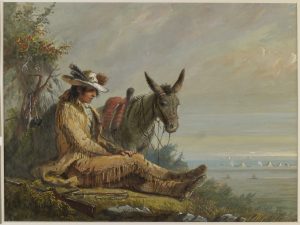
Miller was quick in establishing a studio on Charles Street. He soon started to receive orders for portraits. He met Sir William Drummond Stewart, the Scottish adventurer, and aristocrat here.
Miller was hired by him to accompany him and to record the hunting journey to the Rocky Mountains. Along with some of the representatives of the American Fur Company, they ventured to Fort William and Green River.
Alfred Jacob Miller Paintings
Miller returned to New Orleans later in the year and he then started to work up the sketches in watercolors and oils. These scenes and the incidents of the hunting journey became the basis of a series of paintings.
They documented the Native Americans of the United States. Somehow he was able to arrange an expedition in New Orleans in July 1838.
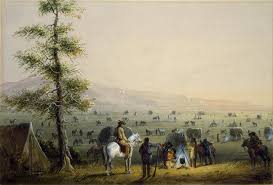
He traveled with the paintings to Stewart’s Murthy Castle in Scotland in October 1840. A collection of the commissioned work was ultimately hung.
Miller spent a year in Scotland and another one in London and returned to Baltimore in April 1842. With much effort, he did establish himself as a portrait artist in the city. Alfred Jacob Miller died on June 26, 1874.
Alfred Jacob Miller’s Contributions
A scrapbook was discovered where Miller had pasted about 101 of his drawings. Each of the drawings was accompanied by a humorous or explanatory comment. This was in the artist’s handwriting.
The entire group of such illustrations in the scrapbook created a rare continuous portrayal of life in an American city over quite a long period.
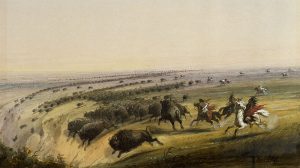
The earliest of the sketches were from 1825 and the latest ones dated sometime in 1870. In most probability, the Baltimore sketchbook was created for the pleasure of his family or friends.
The paintings also showed an interest in the genres that were prevalent in America in the second quarter of the 19th century.
Alfred Jacob Miller Facts
There were lots of important subjects that had caught the attention of Miller. The slave trade, politics, the Civil War, women’s rights and domestic or maritime scenes were recorded by the brush strokes of the artist.
He populated his paintings with the downtrodden and the affluent and all other classes of society. Miller was one of the best American artists of the century.